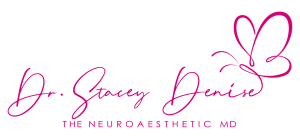“We didn’t ask to be addicted to comfort. We just wanted to feel safe.”
— Dr. Stacey Denise, Fiery Orange Chicken
Is It Healing—Or Is It Hijacking?
There’s a fine line between remedy and reliance. GLP-1 shots such as Ozempic, Wegovy, Mounjaro have become modern medicine’s golden children, promising us a shortcut to lighter bodies and quieter cravings. No calorie counting. No emotional labor. Just a little more space in our jeans and a little less noise in our heads.
But as I scroll the headlines and listen to the stories women share, I can’t help but wonder: Are we numbing the very cravings that are trying to tell us something important?
These medications hush hunger, yes, but they also soften the colors of pleasure and motivation. Some call it “Ozempic personality”, that sense of being thinner, but somehow less alive. Not just eating less, but feeling less.
And when I hear about new struggles like binges, fears around food, even self-punishment, I don’t see “side effects.” I see signals. The body, confused: Am I being punished, or protected? Am I safe enough to feel?
When Wellness Becomes Performative
If healing is really the goal, why are so many people, many not even living with obesity, lining up for these shots?
A recent analysis found that most GLP-1 users don’t meet the clinical criteria for obesity. But in a world where thinness is currency, these medications become a ticket to social “relevance”. Not because we’re vain. Because we’re human. We want to be seen. We want to feel safe.
This is where the language of addiction quietly enters the room—not as judgment, but as a gentle question.
Addiction, at its core, is the search for relief. And for many, thinness is the high that’s always just out of reach. The new craving, dressed up as wellness. When the Cure Becomes the Craving.
It’s striking, isn’t it? We once questioned a vaccine meant to protect us all. Now, we celebrate a shot that promises a smaller body. We fear what we can’t see (immune support), but glorify what we can (a shrinking waistline).
The Inner Child and Orange Chicken

Let’s talk about comfort eating, you know the kind that’s never really about the food. Years ago, I painted “Fiery Orange Chicken” after realizing my craving wasn’t for takeout; it was for safety. For a moment when my body could finally exhale, unjudged.
When I started tending to my inner child and healing old wounds, I noticed my cravings changed. I didn’t need to “earn” rest with sugar or chase stillness with snacks. Instead, I built rituals: deep breaths, soft lights, gentle words to myself. Was the orange chicken the problem? No. It was a messenger. My medicine, for a season.
But healing called me to a new prescription, one that asked me to remember myself whole.
From Meds to Meaning: What’s the Way Forward?
Let’s hold space for all of it:
- GLP-1s can be life-changing for those living with chronic metabolic conditions.
- They can also be destabilizing when used to mute the body instead of listen to it.
This is why I always return to my three pillars of Lifestyle Medicine:
- Stress
- Sleep
- Emotional Wellbeing
Because without safety, no wellness protocol sticks. Without self-worth, even kale becomes a punishment. And when self-regulation is out of reach, the nervous system will chase dopamine wherever it can, be it food, pharmaceuticals, or the next quick fix.
Closing Reflection
This is not a call to shame. It’s a call to sovereignty. To ask not just what works, but what actually heals. Not just how much weight you lost, but how much self-abandonment you let go of.
If you’re ready to explore your own healing narrative, let’s get to the root, before the next injection, before the next craving.
Begin Your Neuroaesthetic Reset™ Journey
Experience the first week of my 12-week Neuroaesthetic Reset Program, a gentle, sensory-based invitation to restore safety to your sensory self and rediscover your own rhythm.
Reserve Your Spot in the Beta Program
Art is the Medicine. Design is the Therapy. Healing is the Evolution.
— Dr. Stacey Denise










